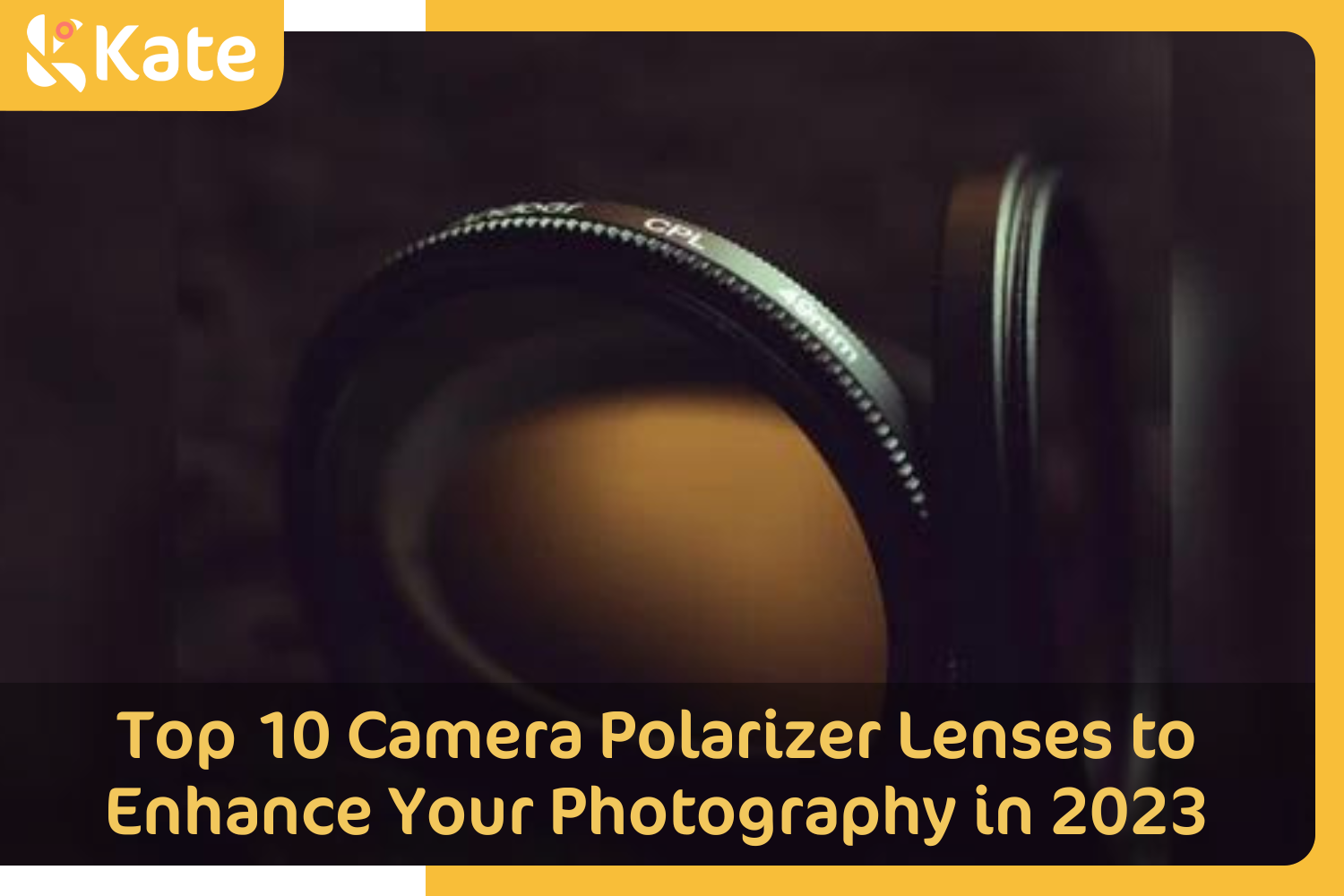Buyer's Guide to Gimbal: How to Choose | Which to Pick?

Various practices help in achieving stabilized and generally great quality photos or video. A gimbal is a perfect tool that can offer you the best stabilization, whether using a phone or a DSLR to shoot. There's a great selection of shooting tools in the market, with some having automated features like motion sensors. Therefore, you'll be getting more than a camera holder.
So what is a gimbal and how best can you use it? The following article is an in-depth look at gimbals, their advantages, and factors you can consider when purchasing one. Read on to discover more.
Everything You Need to Know About a Gimbal

Photo by Jakob Owens on Unsplash
What Is a Gimbal?
A gimbal is a device that holds a camera, helping you keep it level and stable during a production shoot. Its primary purpose is to enable you to capture smooth, crisp shots.
If you're wondering how it's different from a tripod, gimbals allow you to capture videos and photos while in motion or other impractical contexts. For instance, gimbals come in handy in big-budget action films or scenes that involve lots of movements.
Features and Uses of a Gimbal
As mentioned a gimbal's primary function is to keep your camera level and securely mounted. It comes with multiple rotational axes that can move independently. You can operate the gimbal's axes to get the desired setting for your shot.
These adjustments come in handy when shooting in outdoor situations where external factors like wind and vibration. They also protect your camera from sudden impact, by absorbing the shock.
Therefore, it helps you continue shooting without compromising your shot. Additionally, you'll protect your expensive gadgets such as drones or 4k/8k quality cameras.
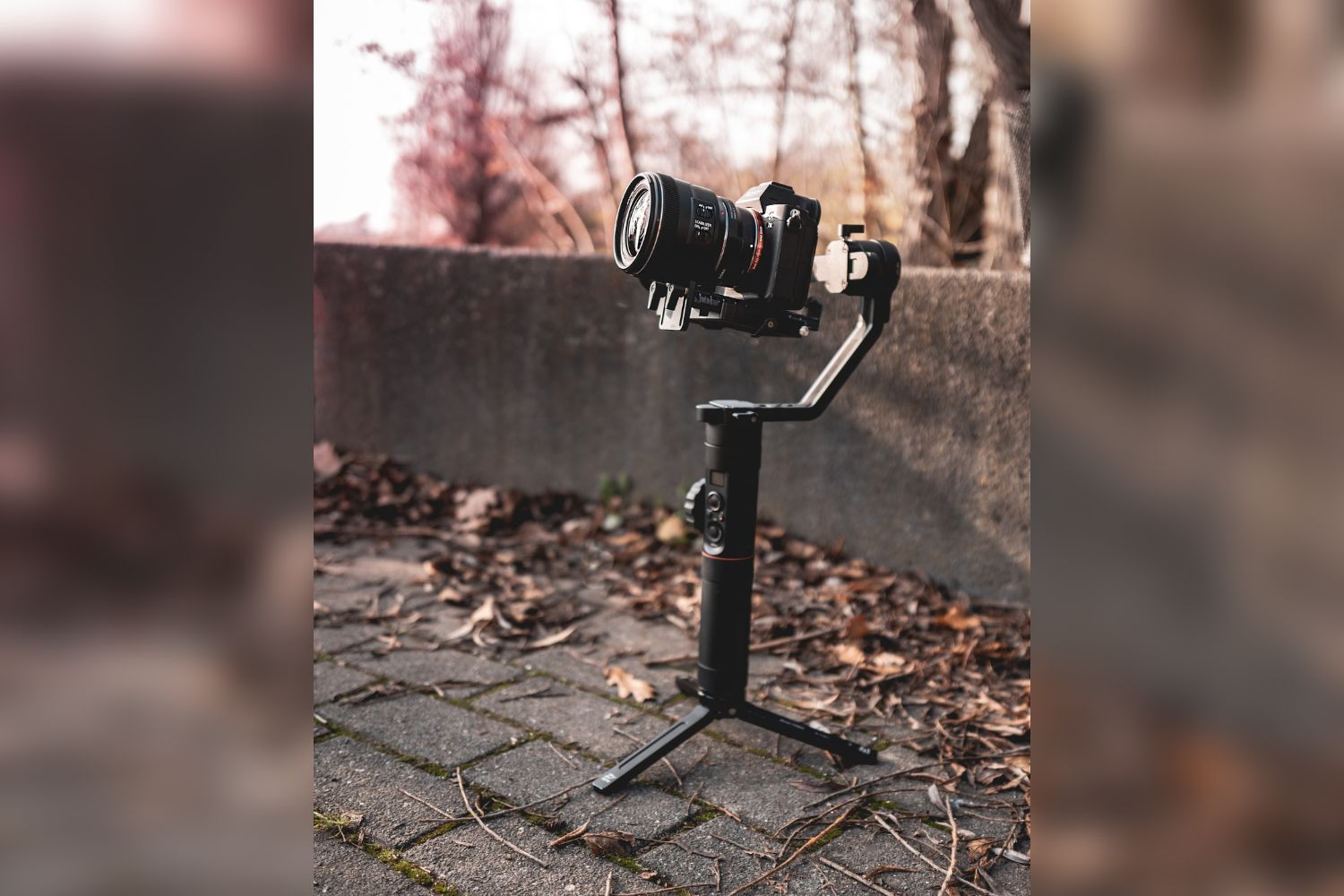
Photo by Kim Becker on Unsplash
What to Consider When Getting a Gimbal
Here are factors to consider when purchasing a quality gimbal:
- Load Capacity: A quality gimbal should fully support the weight of your camera plus the lens.
- Compatibility: Note that some gimbals might not work with a camera, limiting their movement and creativity on your set.
- Weight and Size: Lightweight gimbals are easy to transport and move during your assignment.
- Battery Capacity: A gimbal's power can last 2-12 hrs. Ensure you get an easy swap version and remember to have it charged before your activity.
- Stability: Gimbals with at least three axes help you achieve stable and smooth shots.
- Price: The market offers products of various price ranges depending on the type, and quality.
Types of Gimbals
- DSLR gimbals
- GoPro gimbals
- Phone gimbals
DSLR Gimbals
Here are the best DSLR gimbals in the market:
1. DJI Ronin-SC

Image Credit: amazon.com
The DJI Ronin-SC is a lightweight and compact device designed to hold cameras weighing up to 12.79 lbs. It is a waterproof version also coming with a carry case for various gimbal pieces.
The gimbal weighs 2.97 lbs and comes with a three-axis. You'll get a great deal of service from the 12-hour battery capacity.
Advantages- Great durable quality.
- Has a quality locking system.
- It is easy to use.
- Can have friction between the tilt arms.
- The carry case zipper can be annoying.
2. Zhiyun Weebill S
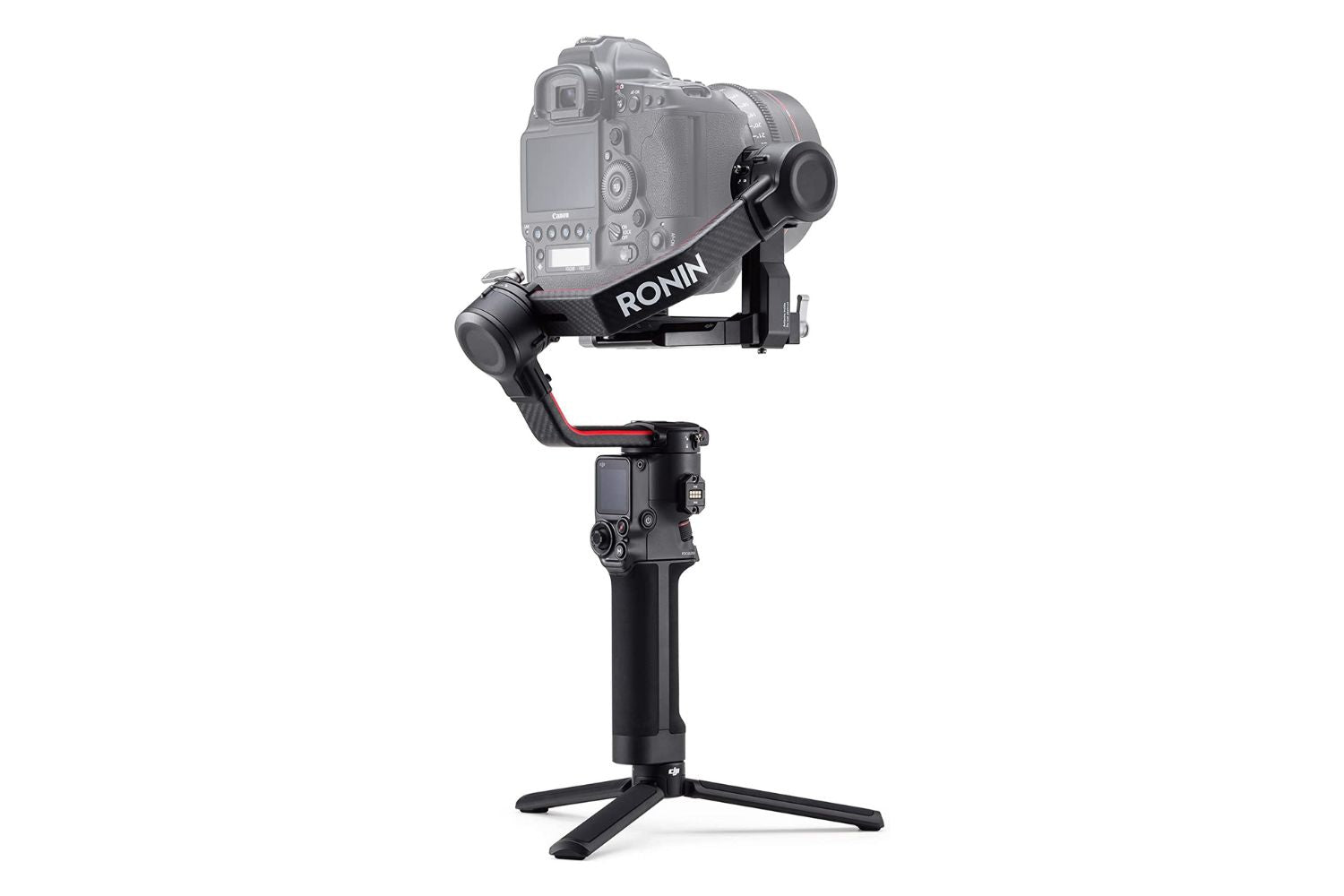
Image Credit: amazon.com
The Zhiyun Weebill S offers excellent stabilization and has intuitive controls. Also, the durable build comes in handy in demanding shoots. Therefore, you can depend on it if you're a professional filmmaker or photographer.
Like the previous version, it's a three-axis version. However, it has a greater battery life, which runs between 12-14 hours. It's also lighter, weighing 2.04 lbs.
Advantages- Superior battery capacity
- Durable built
- Supports relatively heavy mirrorless DSLRs
- Has a confusing button layout.
- It's challenging to adjust the controls.
3. Glide Gear SNC100

Image Credit: amazon.com
The Glide Gear SNC100 is a unique option if you want to shoot personal content. It is attachable to your body, allowing you to easily perform social media influencer chores. This Glide Gear is 3lbs and provides support for 8mm-25mm lenses.
Also, the gimbal captures 180 degrees of POV shots. It is built to last through the aircraft's aluminum rugged design.
Advantages- Provides an option for POV content creation option.
- The design is durable.
- Quite affordable
- Complex assembly process.
- Might not carry heavy DSLR cameras.
4. MOZA Aircross 2

Image Credit: amazon.com
For those looking for an innovative version, the Moza AirCross 2 offers an excellent solution. It has impressive stability, ensuring you get quality photos and videos.
The gadget features an advanced three-axis and a great ergonomic design. Another high-end quality is the 11-hour battery capacity and its capability to hold up to 7.05lbs of camera weight.
Advantages- Capable of carrying heavy digital cameras.
- Has great and smooth controls.
- Reliable battery life.
- Lacks a battery capacity display.
- The screws under the quick-release plate tend to loosen.
5. FeiyuTech SCORP-C
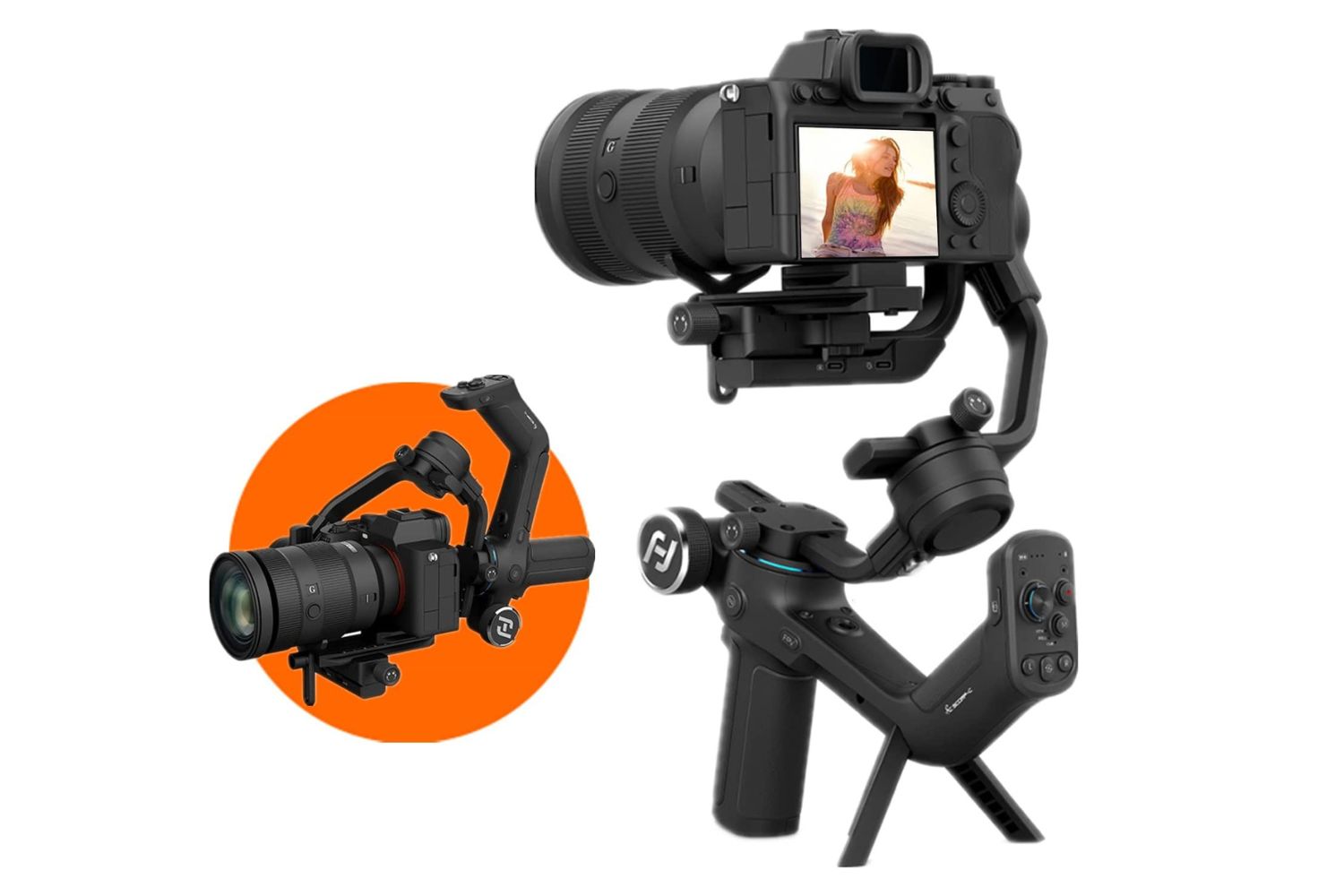
Image Credit: amazon.com
Another quality gimbal is the FeiyuTech SCORP-C, boasting great stability for your professional filmmaking. This gadget comes with a hanging handle to easily adjust and fit different camera and lens varieties.
You'll love its battery life offering you between 10-13 hours of usage. Additionally, the 1.98 lbs gimbal can carry up to 5.51 lbs of camera weight.
Advantages- Quality version for high-end projects.
- It's lightweight and easy to use.
- Reliable stabilization.
- Takes a long time to charge.
- Can sometimes be shaky.
6. DF DIGITALFOTO Thanos Gimbal

Image Credit: amazon.com
If you're looking for a premium option, the DF DigitalFoto is your answer. It offers great support, hence coining the name Thanos gimbal. Therefore you can carry heavy cameras without worry of falling or getting unstable videos.
The gimbal is 11 lbs and works with any gimbal variation. It has a wearable vest that is easy to assemble and use. The setup has a spring function made from durable aluminum alloy.
Advantages- Can work with DSLRs
- Reliable for big-budget projects
- Fairly priced for its functionality
- Can be heavy for some.
- There are cheaper options offering the same functionality.
7. ZHIYUN Weebill 2
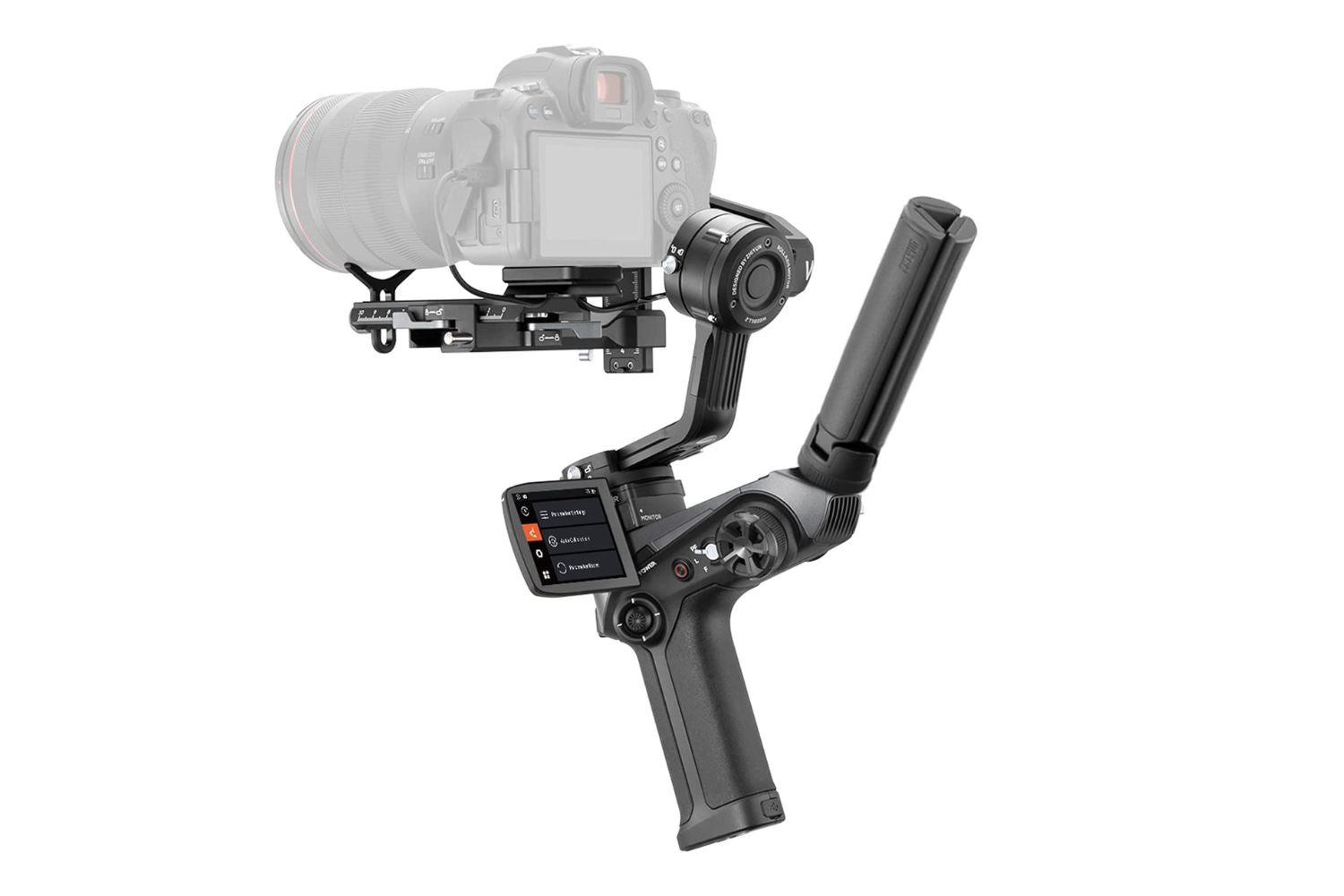
Image Credit: amazon.com
Another versatile DSLR gimbal is the ZHIYUN Weebill 2. It guarantees to offer smooth and stable results in demanding conditions like action scenes or sports shoots.
Weighing 3.15 lbs it offers 9 hours of continuous shooting. Additionally, it comes with a 3-axis for ample shooting.
Advantages- Excellent locking system.
- The axis guarantees excellent balancing.
- Offers substandard results.
- There are better gadgets in the price range.
Best GoPro Gimbals
Are you looking for the best gimbal for GoPro Cameras? Check out the following products.
8. Zhiyun Crane M3
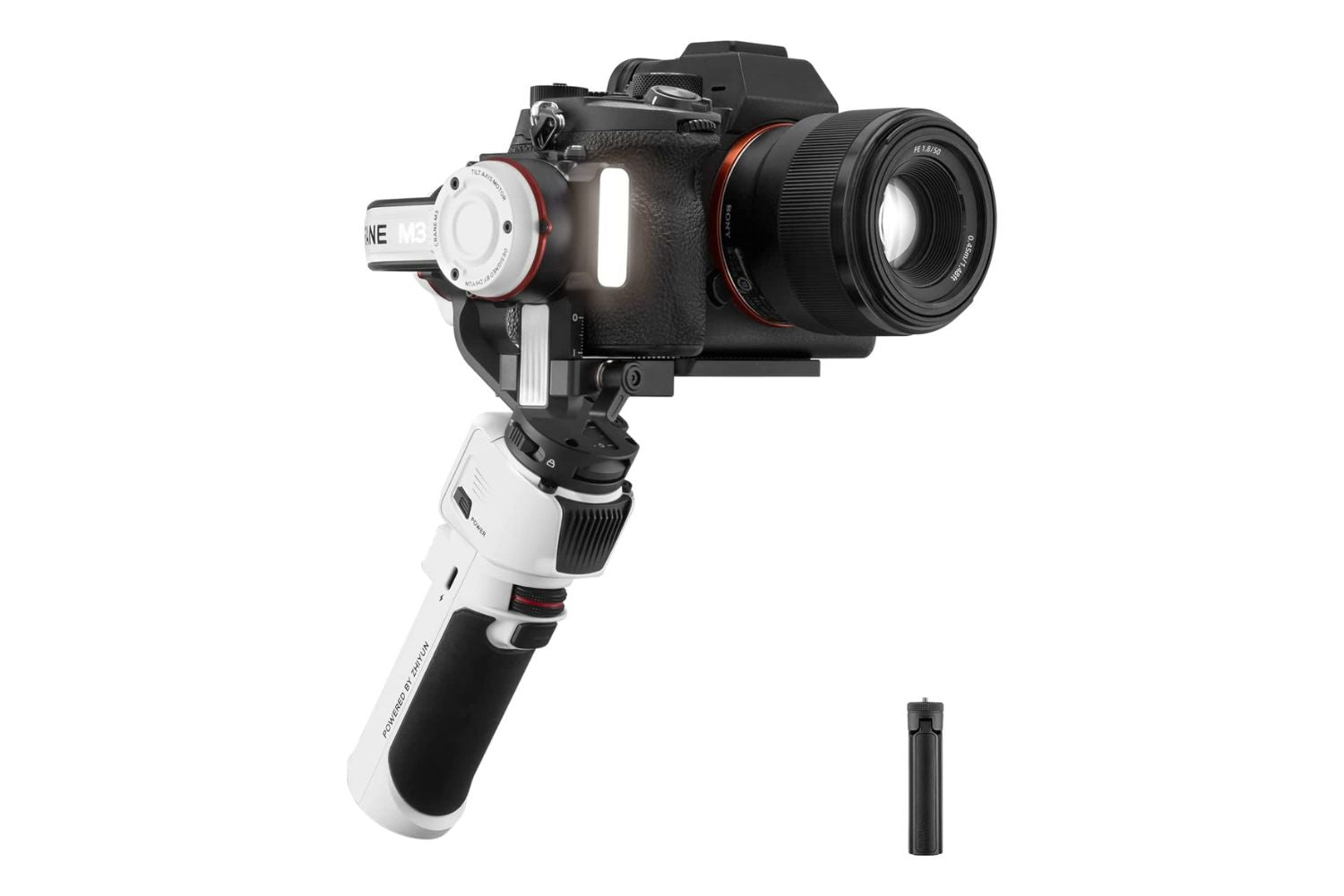
Image Credit: amazon.com
The Zhiyun Crane M3 is a reliable 3-axis gimbal offering precise and smooth control. It also has great customizable settings, guaranteeing flexibility in the shooting field. Adjustability also works with different-sized cameras.
This device weighs 1.00 lbs and the battery lasts up to 8 hours.
Advantages- Gas is a compact and powerful motor.
- Convenient controls.
- Extremely lightweight.
- Relatively expensive.
9. FeiyuTech G6 Max
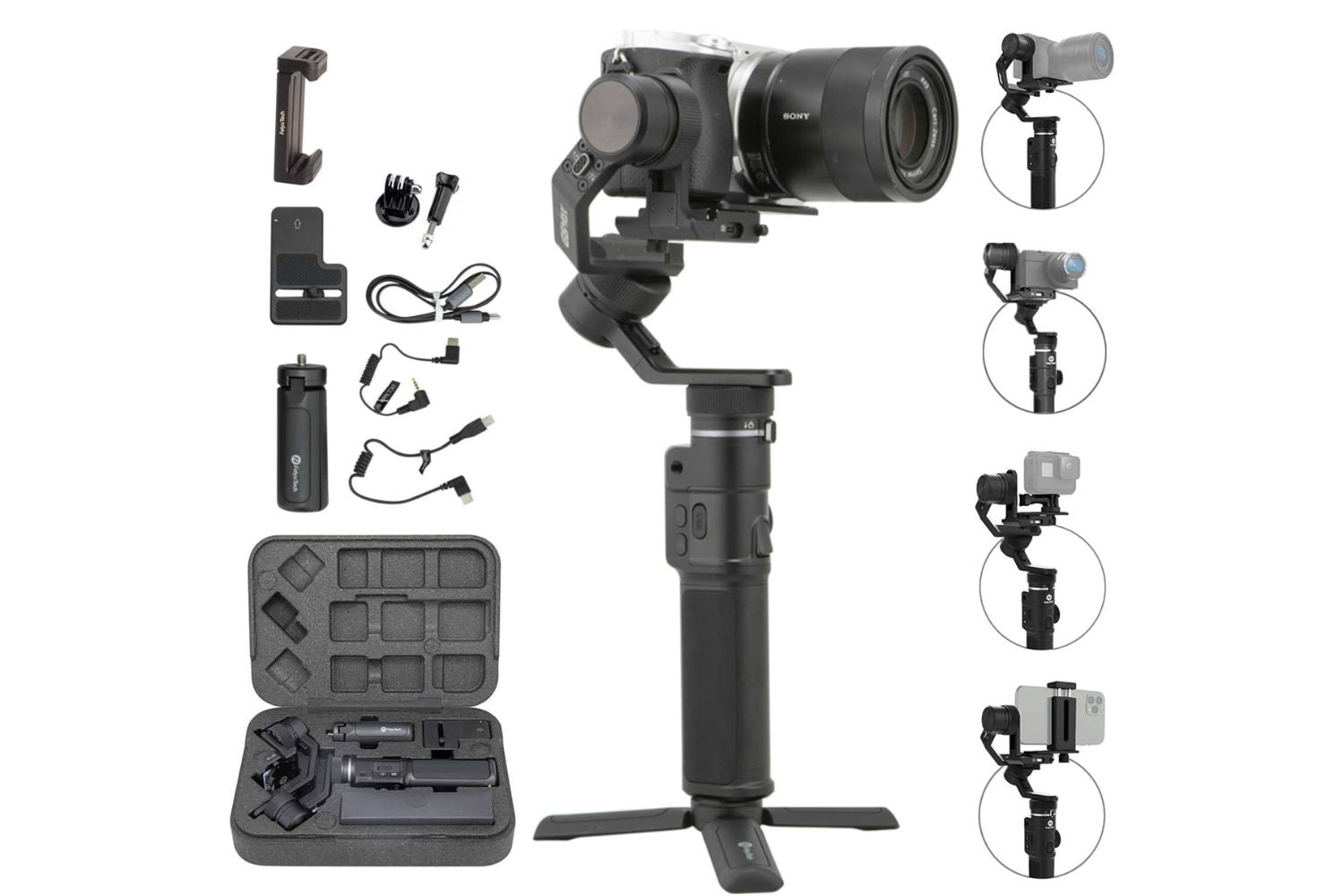
Image Credit: amazon.com
FeiyuTech G6 Max is lightweight and easy to use, coming with a built-in OLED display. It includes physical motor locks, guaranteeing balance through the shooting process.
The device is slightly heavy, weighing 1.48 lbs which can carry 1.2 kgs. You can shoot continuously with the 9-hour battery capacity.
Advantages- It is a lightweight make.
- Has reliable compatibility features.
- Includes an excellent OLED display.
- The build is sub-standard.
- Its app can be complicated.
10. Hohem iSteady Pro 4
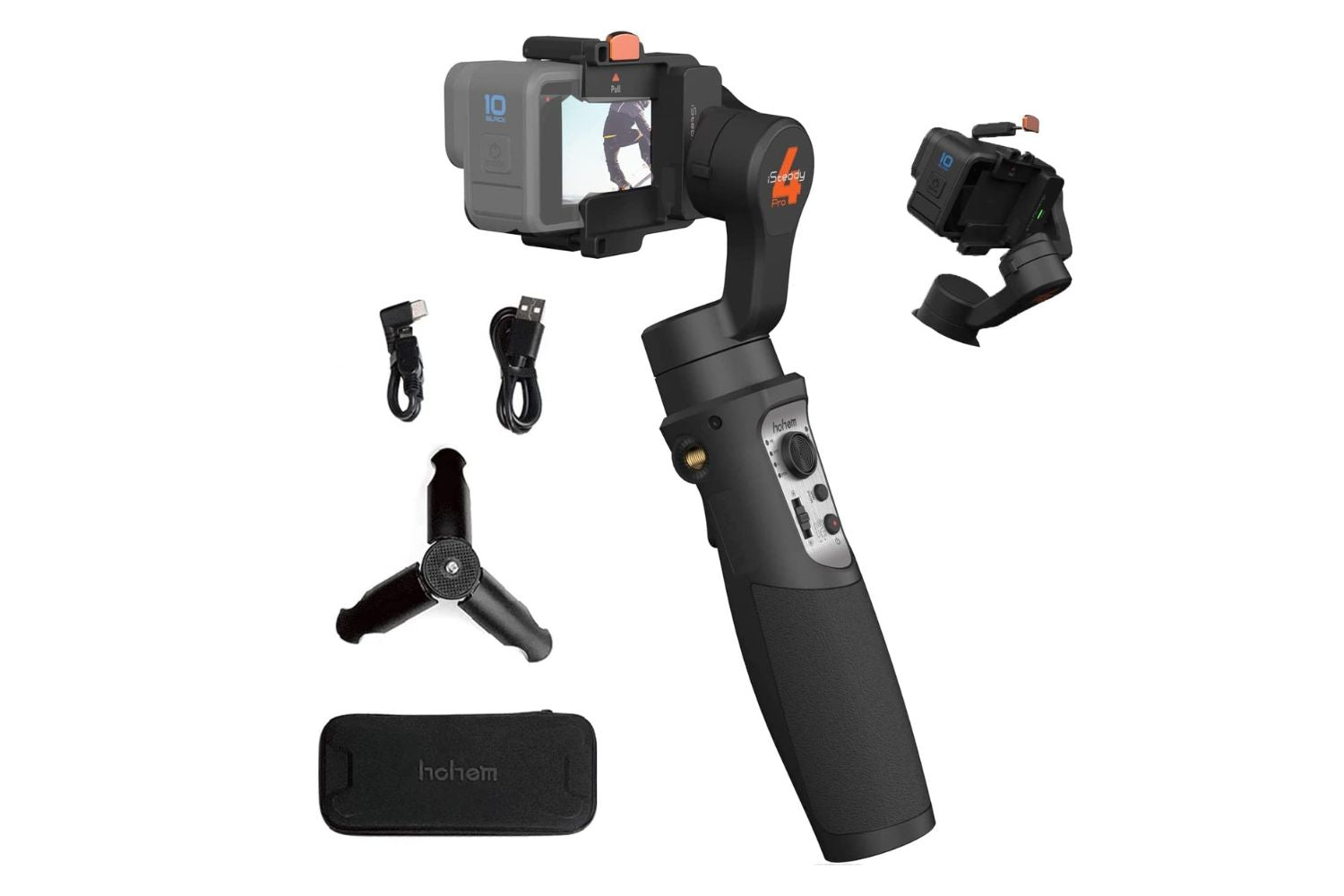
Image Credit: amazon.com
The Hohem device is unique, coming with premium features like the power bank function. You'll be interested to know that the feature nearly quadruples the battery capacity of its action camera.
The gadget has a Bluetooth control module, allowing you to start/stop your shoot with a single click. It is a lightweight gimbal weighing 150 grams and has a premium battery life of 14 hours.
Advantages- Excellent battery capacity and backup plan
- Includes Bluetooth connectivity.
- The 3-axis offers excellent control.
- It is costly.
- Only holds 150 gr if load weight.
Best Phone Gimbal
If you're looking for a phone gimbal, the following are some of the best versions in the market:
11. Zhiyun Smooth 4
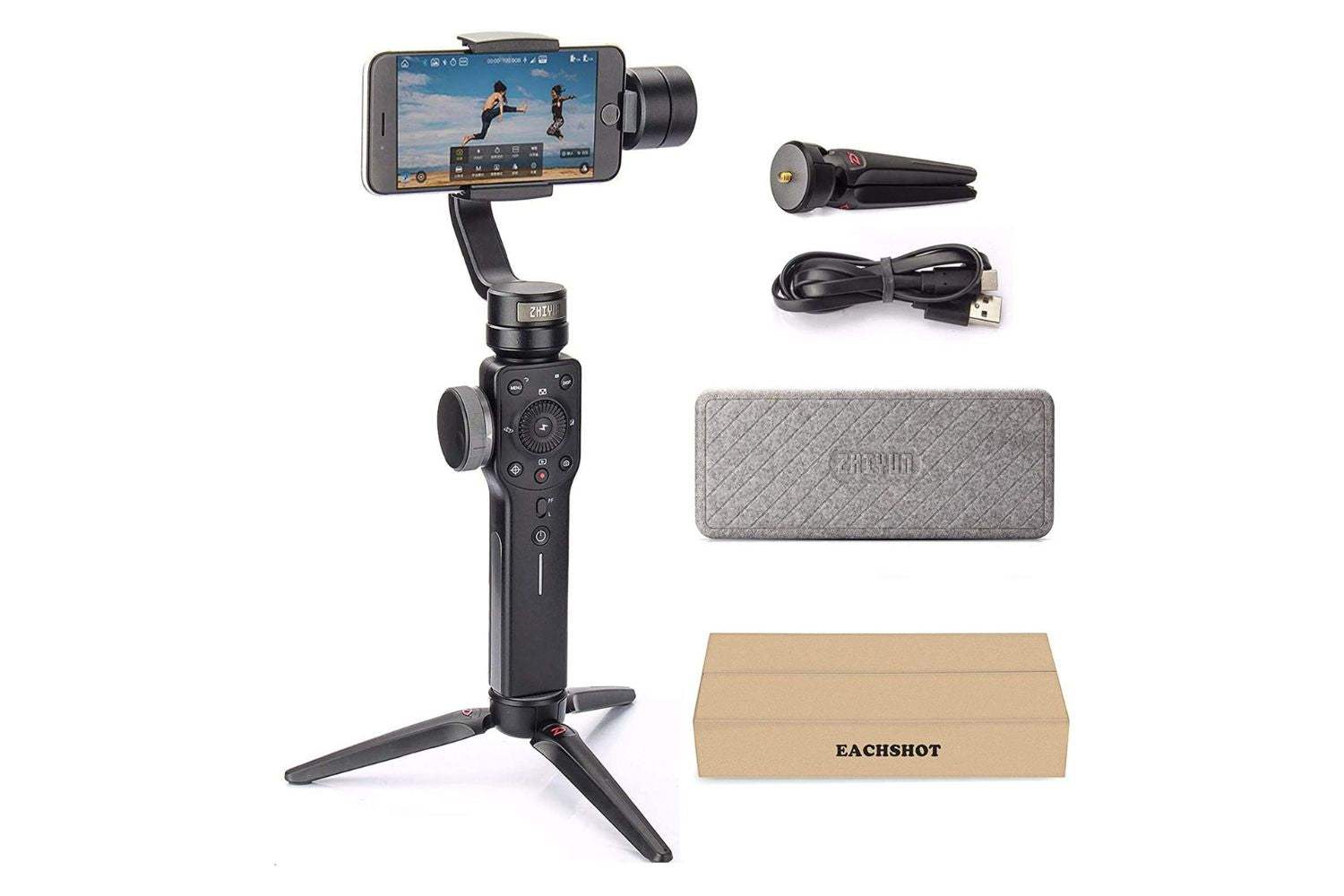
Image Credit: amazon.com
This Zhiyun device is a handheld phone gimbal, guaranteed to give you smooth footage. There it works great with your iPhone. Therefore, it is handy if you're a vlogger or social media influencer.
It is lightweight weighing 1.10 lbs, enabling you to carry devices of up to 7.0 ounces. In addition to the three-axes, the gadget has a reliable 12-hour battery life.
Advantages
- Dependable battery lifespan.
- Excellent value for its ergonomics.
Disadvantages
- Hard to set up for beginners.
- It is challenging to switch between portrait and landscape modes.
12. DJI OM 5
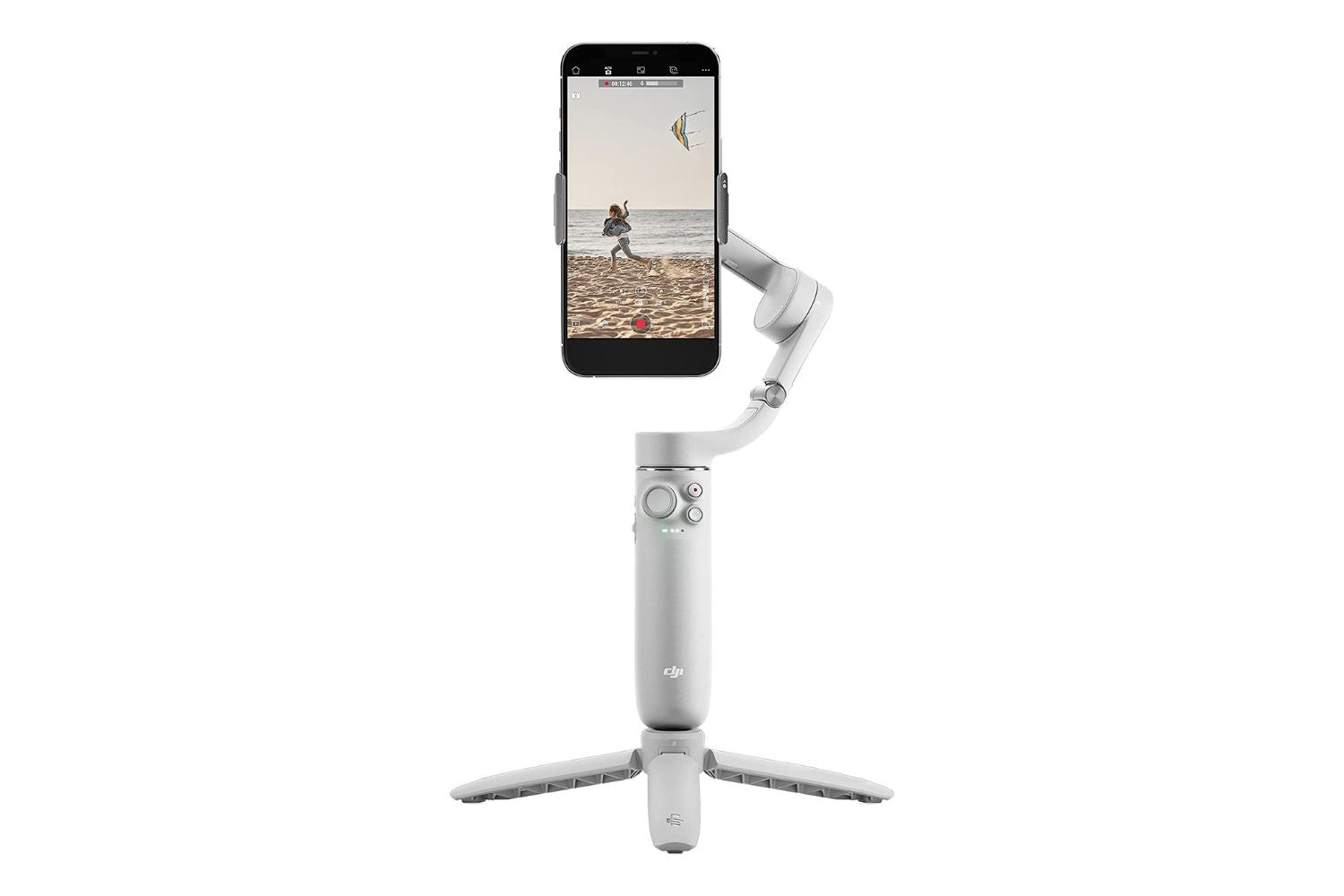
Image Credit: amazon.com
DJI OM 5 is perfect for iPhone users. Like our picks, it is a 3-axis version, ensuring you eliminate shaky and jerky footage. Additionally, it includes an extension rod that allows you to take photos with multiple people or explore various angles.
The device weighs 290 gr and can hold up to 614 gr. Also, you get 6.4 hrs of battery life.
Advantages
- Extremely lightweight and adaptable.
- Desirable battery life
Disadvantages
- The folding arm is off.
- Might not support all Android phones.
Conclusion
There you have our top gimbal picks. If it's your first time getting the gadget, the article goes through the factors that define a quality gimbal. Luckily, the article provides multiple devices that can fit your specific usage. For the Influencers, check the listed mobile gimbals.














 Valentine's Day2025🌹
Valentine's Day2025🌹

